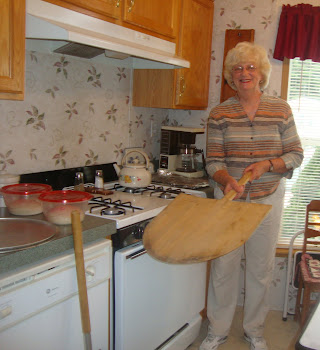This article was published on PMQ by Tom Lehmann the dough doctor.
Question:
We're planning to change the size of our large pizza from 16-inches to 18-inches. How much dough should we use for this size?
Answer:
This is a very commonly asked question, which is easily answered through the use of a little basic high school math. The math involved here has to do with finding the surface area of a circle. The formula for this is expressed as p x R2 . I'll bet you remember that from grade school or high school math class.
To refresh your memory, p is 3.14 (rounded off) and R is the radius of a circle (one-half of it's diameter), and to square the radius, you simply multiply it times itself. With that out of the way, let’s see how we can make this work for us.
In a situation where we already have a pizza and we just want to change the size of the pizza, or add another size, this is what we need to do:
Find the surface area of one of our existing pizza sizes (let’s say it's 12 inches in diameter and the scaling weight is 11 ounces)
Multiply 3.14 x 36 = 130 square inches.
Divide the dough scaling weight by the surface area (11 ounces divided by 113 = 0.0973-ounces of dough per square inch of surface area). You will want to use this same dough loading per square inch of surface area for all of your pizzas (of this type) for consistency in baking and appearance.
Find the surface area of the new diameter that you want to make (let’s say it is 81 inches).
Multiply 3.14 X 81 = 254 square inches of surface area.
To find the dough weight needed for this new diameter multiply the dough loading weight (0.0973 ounces) times the new surface area. (0.0973 x 254 = 24.71 (call it 24.75 ounces) of dough will be needed for the new, 16-inch diameter pizza.
Let’s take a look at another situation. In this case, you might be making a new type of pizza and you don't have any idea of what the scaling weight should be.
Begin by experimenting with different dough weights for a single size pizza. Pick any size you want to experiment with. When you find the dough weight that gives you the pizza that YOU want, make a note of the dough weight.
Now, calculate the surface area of the size of experimental pizza.
Divide the weight of dough that worked best for you by the surface area of the pizza. This will give you a dough weight per square inch of pizza surface (AKA dough weight loading).
Find the surface area of the other pizza diameters that you will want to make.
Multiply the surface area of each pizza diameter by the dough weight loading, and you will have the correct dough weight for that size/diameter of pizza.
The advantages to finding your dough weights in this manner are that each size will have a similar appearance (only the diameter will change) and because the thickness of the dough will always be the same it will bake in a similar manner (shorter time, but probably at the same temperature). If you do a lot of this type of thing, now is a good time to cut this out and post it on the wall near your desk.
Tom Lehmann/the dough doctor
http://www.pmq.com/mag/2004november_december/lehmann.php
A big thanks to Tom Lehmann for posting how to calculate Thickness Factors for pizzas. :)
Norma
This is a blog about my learning knowledge to make pizza. I have been helped by many people on my journey
Welcome...
There are so many variables that go into making a PIZZA. The hydration of the dough, flour, yeast and many more.. Amounts of any kind of yeast in a pizza can make a big difference. Most recipes posted on the web, use too much yeast in their recipes. What I have found out so far, is either bulk fermenting the dough or cold fermenting the dough will give a better flavor in the crust. I am still experimenting to find different flavors in the crust of pies. In my opinion pizza is all about the best flavor you can achieve in a crust. I still am on the journey about flavors in the crust. Even differences in temperatures in you home or times of the year can influence how much yeast to use. If you want a pizza to develop flavors in the crust, there are many ways to go about achieving this.
Adventure in Pizza Making
There are many ways to go about trying to make any kind of pizzas you want to create. PIZZA making is fun and also you get to eat your finished product. I learned to make all my pizza on http://www.pizzamaking.com/forum/index.php
If you look on pizzamaking.com you can see all the beautiful creations of pizzas members make on this site. Members and moderators help members and guests achieve almost any kind of pizzas they want to create. Since joining this site, my pizza making skills have gone from non-existent to something much better. I invite you to take a look at this site.
Total Pageviews
Subscribe to:
Post Comments (Atom)




LPM, thank you for visiting my blog! I noticed your comment on the water kefir and want to tell you that now I brew mine using just Sucanat and non-chlorinated water. 1/4 cup Sucanat (dehydrated cane juice) per quart. There are lots of recipes out there, but this saves me lots of time and trouble. I am excited to see your blog! I love making pizza, particularly when a crowd of hungry people appear at our door.
ReplyDeleteloves2spin,
ReplyDeleteYes, I did visit your blog and really enjoyed reading your blog.
Thanks for the great tips for my water kefir!
Norma